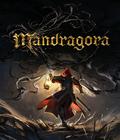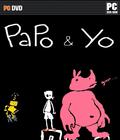One of the criticisms about video games is their limited scope in telling stories. Saving princesses, stopping a great evil from taking over the galaxy, and fulfilling your dream as the ultimate crime lord are some of the plots in countless titles. Very rarely do any of these stories go for mature fare that's beyond sex and extreme gore. Racism and classism are briefly referenced in a few titles, but they're usually an enhancement to a more general story. Papo & Yo was noticed because it tackles something different, but it also resonates because it's a personal experience by the game's creator.
You play the role of Quico, a young boy living in the favelas of Brazil. The game starts with him hiding in a closet from a monster that's so frightful it shakes the room with every step. Without warning, a portal opens in the closet, and Quico runs through it. He's now in the favelas and chasing a girl named Alejandra, who has the power to manipulate things with chalk. As you traverse the world, you eventually meet up with Monster, your sometimes-companion that hides a dark secret. Torn at seeing your friend in his state, you and your companions try to help him find a cure for his ailment.
The game plays like a standard puzzle platformer, minus the presence of enemies or a means of offense. Most of the time, you're trying to hit switches to open doors or manipulate keys to activate and move blocks into place. Other switches let you change the nature of some blocks, such as their orientation or elevation. While you'll hit most of these switches and keys yourself, you also have a tiny robot, Lula, who not only acts as your jetpack but also has the ability to hit switches from afar.
While it sounds like typical puzzle types that you'd encounter in other titles, what makes them stand out are their art style and elements. There are hint boxes, but they're not floating pieces of text above the player's head; instead, you put your head in a cardboard box and rotate it to see the next hint, complete with a youngster's drawings. All of the power lines and switches are made of chalk, which holds a lot of power in Quico's imaginative world. Through most are drawn on walls, they respond to his touch, and elements like chalk handles take on a more solid state in the 3-D world, so they can be manipulated, too.
The use of chalk also gives the moveable houses a bit of personality and some whimsy. Buildings suddenly sprout wings and legs when activated. The walls and floors also become objects that can curve, turn, twist, and be split apart once switches are hit, revealing hidden spaces or creating stairs. Though full world manipulation doesn't reach extraordinary levels, it is enough that it makes each puzzle a delight to watch and solve.
If you're looking for a challenge in the puzzles, you'll be severely disappointed. A large number of the puzzles involve hitting a switch, and the solutions are very apparent. Later in the game, a few puzzles may stump you for a bit due to Quico's inability to climb, but nothing requires a strategy guide, thanks to the abundance of hint boxes near every major puzzle set. This is understandable since you are traveling through a child's imagination, so things shouldn't be too complex or obscure. This also means that the player can breeze through the short game, and with no reason to go back other than for collectible-related achievements, there is little replay value here.
If the gameplay were the only thing holding this together, it would be a decent title, but it wouldn't have gotten people talking. What really captures you is the story and how it plays out. Despite the menacing opening, you discover your power to manipulate the world. That sense of security is still present when you meet Monster for the first time. Though he is a big, burly being that looks like a relative of the imps in Doom, he is quite docile. You can use his stomach as a trampoline while he naps to reach higher locations. You can also lead him toward specific switches with coconuts, and he lifts you away from danger. For the most part, he's just a misunderstood friend.
That sense of relative safety is shattered once he gets his favorite food: frogs. You can try your best to get rid of the frogs by smashing them against the wall or throwing them into unreachable places, but eventually, Monster snags one. Once he does, he transforms from the nice, peaceful being to a fiery demon that is hell-bent on chasing and harming you. Though the attacks result in you being thrashed around and thrown, the stalking nature of Monster and Quico's screams can make one feel uneasy.
The constant desire to find a cure for Monster and the lack of any evident progress also adds to the uneasiness, especially when you discover that this is a metaphor for the creator's childhood. He lived in constant fear of an abusive father with an addiction, he needed to find an escape to deal with it, and he was on a never-ending quest to try and find a cure. They're certainly heavy themes for a video game. Some may feel that the game pushes these concepts too much and too often, and there are a few times when it gets lost, such as with two cut scenes in the rain that don't tie into anything else. Some may feel that some sections go on too long and weaken the message. Very few games have attempted to deal with the subject matter directly, and gamers should definitely experience the story's pacing and unexpected conclusion.
Graphically, Papo & Yo is beautiful because of the art direction. The whimsy of Quico's imagination helps to make the dirtiest parts of the favela look hopeful and beautiful. The manipulation of that world is also a sight to behold, as the ability to bend buildings to your will or make cubes of water act as stable platforms never gets old. Even without the world manipulation, the favelas look great. A bulk of the areas look similar, but you'll see splashes of artistry in the different murals, some of which are so good that you'll pause to appreciate them. The characters also look great, with Monster's rough leathery texturing to Quico's constantly changing appearances being the highlights. On the PC, the graphics remain the same as the PS3 version, though the higher resolution support sharpens a few things and issues of texture pop-in are all but gone. However, a few issues do remain, such as some collision boxes being too big and the prevalent amount of clipping on other objects, like hint boxes and frogs. While not exactly a revolutionary view of how good Unreal Engine 3 can make games look, it is a clear step above what most people envision from an indie game.
The sound certainly outshines the graphics. Though there aren't too many voices in the game, the ones you hear are performed well enough, and they're certainly helped by the use of Portuguese instead of English voice-overs. The music is the real standout, as it evokes the right mood at the right time, with upbeat happy tunes most of the time and a sense of dread once Monster is intoxicated or during the flashback sequences. The use of native wind instruments also gives it a unique flavor and adds a lot of personality to the locales. It also punctuates the necessary emotional beats for certain scenes. All in all, it's a job well done.
Papo & Yo is a game that can be judged in two completely different ways with two completely different results. It's an average game because the puzzles are too simplistic despite their stylish appearance, and there's nothing that compels you to repeat the journey. As a story, however, the title succeeds in giving you an amazing journey as it deals in a subject matter that few games ever attempt. The pacing is right, the resolution is fair but somewhat unexpected, and the fact that this was heavily influenced by the creator's own experience makes this a gripping tale. Unless you're bothered by the subject of child abuse, even if demonstrated via metaphors, this title is highly recommended if you want to experience a game that can match the emotional impact of films.
Score: 8.0/10
More articles about Papo & Yo











 Papo & Yo introduces players to a boy named Quico and his new best friend, Monster, a cuddly creature with an unfortunate addiction to poisonous frogs. Players will lead Quico though a vibrant, 3D adventure, solving puzzles with Monster’s help… but they’ll have to avoid being torn limb from limb by his amphibian-fueled rage in the process.
Papo & Yo introduces players to a boy named Quico and his new best friend, Monster, a cuddly creature with an unfortunate addiction to poisonous frogs. Players will lead Quico though a vibrant, 3D adventure, solving puzzles with Monster’s help… but they’ll have to avoid being torn limb from limb by his amphibian-fueled rage in the process.



















